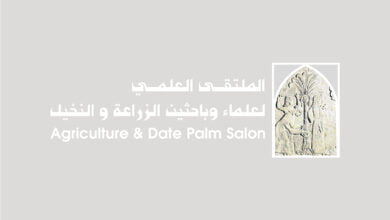البروتينات المتعلقة بالدفاع في أمراض النبات PATHOGENESIS- RELATED PROTEINS IN PLANT PATHOLOGY
دكتور محمد حمزة عباس / مركز أبحاث النخيل/ جامعة البصرة
تعرف البروتينات الدفاعية في النبات على أنها تلك البروتينات المتخصصة التي يتحفز أنتاجها في العديد من الأنواع

النباتية خلال التعرض للإصابة بالممرضات النباتية، وتكون موجودة بتراكيز واطئة جدا ً أو غير موجودة في الخلايا النباتية السليمة. يرتفع تراكم هذه البروتينات أثر الإصابة بالعديد من الممرضات النباتية ومنها الفايروسات والبكتريا والفطريات، فضلا ً عن النيماتودا والحشرات. شخصت هذه البروتينات أول مرة في نبات التبغ المتفاعل مع الإصابة بمرض تبقع الأوراق الفايروسي، وأكتشف 17 نوعا ً منها لحد الآن ، ومن الجدير بالذكر أن وظيفتها الحيوية ليست محددة بشكل كامل لغاية الوقت الحالي.
The acceptable definition of pathogenesis-related proteins (PR Proteins) is these host-specific proteins which are induced in different species of the plants during the pathogen attack or similar situations. The accumulation of PR proteins can be resulted from a pathogen attack including viral, bacterial and fungal pathogens, nematodes, insects and herbivores. The PR protein are absent, or present at very low concentrations in healthy tissues, but these concentrations will increase significantly within a short time after infection with pathogens (Fig. 1).
The first discovery of inducible defense-related proteins was found in tobacco reacting by hypersensitivity to tobacco mosaic virus (TMV) in 1970. Many published paper revealed that these proteins are induced in resistant tobacco plants and accompany a hypersensitive necrotic response to viral pathogen. Up to date there are about 17 families of PR proteins that have been identified in different plants, differing in amino acid sequences, serological relationship and biological activity (Table 1). Homologues of most of these PR proteins families are to be found in both monocots and dicots.
PR proteins are well characterized by their low molecular weight (about 10-40 KDa) and their localization in different locations in the plant such as vacuoles, cell wall and the intercellular space, also, most PRs tend to have extreme isoelectric points (pI).
The biological functions of PRs are not fully understood for all of the members of the PR families, but PRs can be induced systemically by infection with different pathogens, and certain PRs play a pivotal role in plant defence as proteins that restrict the multiplication and spread of the pathogens. Apart from the defence induction, PRs also appear to be multifunctional proteins and many PRs have also been detected during plant development and senescence.
Focusing on PR-1 family which considered as one of the most important PR families, and found to be induced by pathogens and salicylic acid, and used as a marker for systemic acquired resistance (SAR). The function of the PR-1 family is still not fully clear, but many researchers have attempted to clarify the function of PR-1 in plants. There is much evidence indicating an association between PR-1 proteins and enhanced disease resistance against Oomycete and bacterial pathogens. Tobacco plants which constitutively expressed PR-1 showed a resistance against Peronospora tabacina and Phytophthora parasitica var. nicotinae (both of them are Oomycete pathogens). In Tomato, PR-1 was found to reduce the germination of sporangia and germ tube length of P. infestans, in in vitro experiments, and this protein was also found to reduce the surface area showing symptoms of tomatoes leaf discs infected with this pathogen when applied in vivo.
In our study with the rice blast fungus pathogen Magnoporthe oryzae, a significant accumulations of PR1 were detected in Barley leaves after 24 and 48 hours of inoculation (Figure 1).



احسنت دكتور محمد موضوع في غاية الأهمية
حياك الله دكتور عبد الكريم….